Best Battery For Solar Storage (Review) RV And Camper Van
Batteries do two essential things for your electrical system. They store energy when you aren’t generating any, and they “smooth out” erratic energy sources.
In this article we’re going to discuss the best battery for solar storage. We’ll also get into the different battery types, chemistries, and how to size your batteries. Finally, we’ll show you how to combine batteries and perform battery maintenance.
The Best RV Battery For Boondocking And Solar Power Storage
There are a lot of different battery brands out there so we wanted to narrow down the options and give you our top choices based on buyer reviews and longevity. These companies consistently put out the some of the highest rated batteries on the market.
Best AGM Deep Cycle Battery Brands
- Comes with a two year warranty
- Made With High Quality Materials
- Comes in 100Ah, 150Ah, 200Ah sizes
- 30 day refund policy and 1 year warranty
- High performance in any temperature
- Comes in 100Ah size
Best Lithium LiFePO4 Battery Brands
- LiFePO4 Chemistry
- 100A continuous output, 200A surge output
- 10 year warranty
- For RV, Solar, Marine, and Off-grid Applications
- Low self-discharge
- Comes in 50Ah, 100Ah, 170Ah sizes
Choosing A Battery For Your Camper Or RV: The Cliff Notes
- Economical choice: Flooded lead acid. This is the oldest technology in the bunch. If maintained properly, they still are the cheapest short-term and long-term. Maintenance is more involved and must be managed more carefully due to ventilation and liquid acid inside. It is not hard to do, but for small amateur systems they aren’t as appealing.
- Low maintenance: AGM Deep Cycle. Over the long term, this is the most expensive battery because they wear out faster than the other two. In the short term, they are cheaper than lithium. They are common and all around a good starting point for most amateur installers.
- Premium choice: Lithium LiFePO4 These batteries are just around the corner from being the best choice for everyone. Unfortunately, the high up front cost is a barrier to many.
What Size Battery Do You Need?
We’ve built a solar system calculator to help you figure this out. Just enter all of the electronics you plan on powering and the calculator will help you determine the amount of solar panels, battery bank size, charge controller and inverter size you need for your build.
Then, read the tips below to learn how to get the most juice out of your batteries and maintain them in the long run.
Go to the camper van solar system calculator
Lithium and AGM Battery Health
Lithium batteries can be safely discharged nearly completely. AGM batteries should be discharged to no more than 50%. Meaning you’ll need a larger AGM battery bank than a lithium one for the same use.
Follow the voltage chart on the right to keep your AGM battery bank in a healthy condition.
AGM Battery State of Charge
| AGM Voltage | State of Charge |
|---|---|
| 12.7 | 100% |
| 12.5 | 90% |
| 12.4 | 80% |
| 12.3 | 70% |
| 12.2 | 60% |
| 12.1 | 50% |
| 11.9 | 40% |
| 11.8 | 30% |
| 11.6 | 20% |
| 11.3 | 10% |
| 10.5 | 0% |
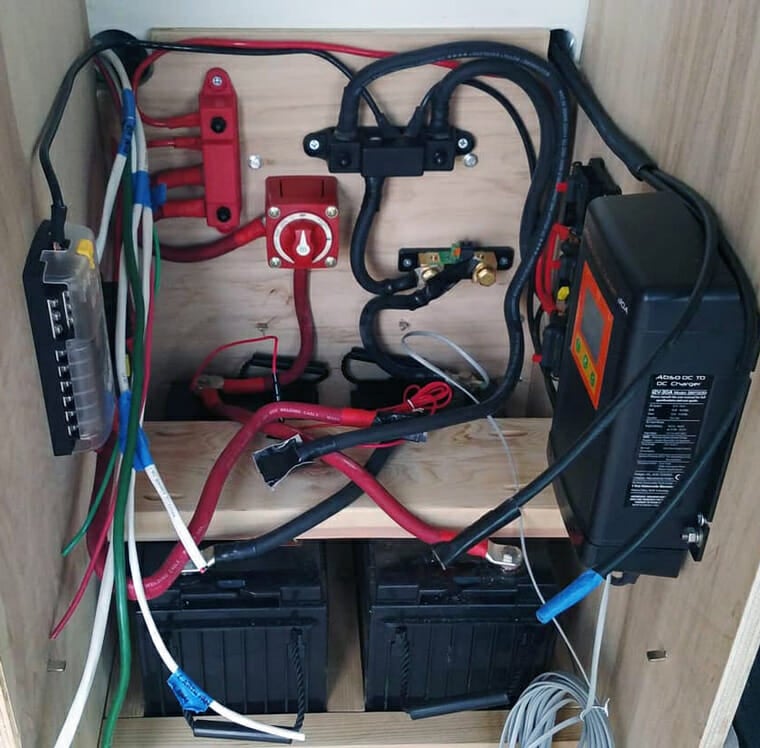
What Is A Battery?
Batteries use chemistry to take the power you collect and store it as potential energy, ready to be used later.When the battery is connected to a device, a chemical reaction occurs that generates electricity. In rechargeable batteries, this chemical reaction is reversible when a current is given to the battery.
There are a couple different specs when looking at batteries:
- Voltage (2V, 6V, 12V, 24V) is a measure of the “pressure” of your electrical system. It’s important that your system components match your battery voltage. Too high of voltage, and you’ll break your components, like a water pipe bursting from too much pressure. Too low and they won’t turn on. Most people run 12V systems, although many newer RV’s make use of larger 24V or 48V battery banks.
- Amp-Hours (Ah) are a measure of how much electricity your battery holds. If you imagine electricity like water, the Ah are the size of the bucket that the water is stored in. If you have two 12V batteries, one that is 50Ah will be physically about twice as large as one that is 25Ah.
- Cold Cranking Amps (CCA): This is a measure of how fast the battery can safely discharge, which is only relevant for short bursts. It is not a useful piece of data for house battery systems.
Batteries have a positive (+) and negative (-) post. Energy travels directionaly from the (+) to the (-) post wherever there’s a connection.
Types of Batteries
As if this wasn’t complicated enough, there are several categories of batteries for vehicles and they each operate a little bit differently. They are:
- Starter batteries
- Deep-cycle batteries*
- Hybrid batteries (AKA Marine or Golf Cart batteries)
- Jumper batteries
Starter Batteries
Starter batteries do exactly what it sounds like; they start your motor! Starter batteries (also known as cranking batteries) are designed to push out a large amount of power in a short period of time to turn over all the moving parts of your engine. They are usually rated in CCA (Cold Cranking Amps), which is a measure of how much instant power they can deliver to the starter.
Starter batteries can be used to power household items, but it’s not a good idea. If you discharge and recharge them on a frequent basis, their lifespan will be shortened significantly.
Starter batteries shouldn’t be used for anything other than starting the car
Deep-cycle Batteries
Deep-cycle batteries are the workhorse of the battery world. These have thicker internal plates that provide power for long periods of time and can be discharged and recharged frequently. The consistency of a deep-cycle battery makes it the ideal solution for long-term use. They are not able to provide as much instantaneous power as starter batteries.
Deep-cycle batteries are rated in Ah (Amp-hours). Most of the time they don’t even have a CCA rating. Whereas starter batteries are meant to deliver a short, fast discharged and then quickly charged again, deep-cycle batteries can be discharged much further over a long period of time.
Deep cycle batteries are the ideal choice for most van setups
Hybrid batteries (Golf Cart, Marine, Dual-purpose, etc.)
These are the jack of all trades. Their internal makeup can handle quicker discharge but they are more resilient in frequent charge cycle situations.
These batteries are used in situations that need a bit of both worlds: boats that need to start the outboard gas motor but also run an electric trolling motor for a few hours. Golf carts require a lot of power at full throttle but need to be able to run for a long period of time.
Hybrid batteries work fine in a campervan. They won’t last as long as a deep-cycle, but are often cheaper and in the case of some electronic requirements might even be the best choice.
Hybrid batteries also work well, particularly if you need quick discharging capabilities
Jumper Batteries
These are batteries designed for emergencies that can deliver enough juice to jump your starter battery if it’s dead. They often come with USB ports for charging small devices. They don’t store enough power to run a full electrical system, but work great as a backup or for those people with only a small electrical device.
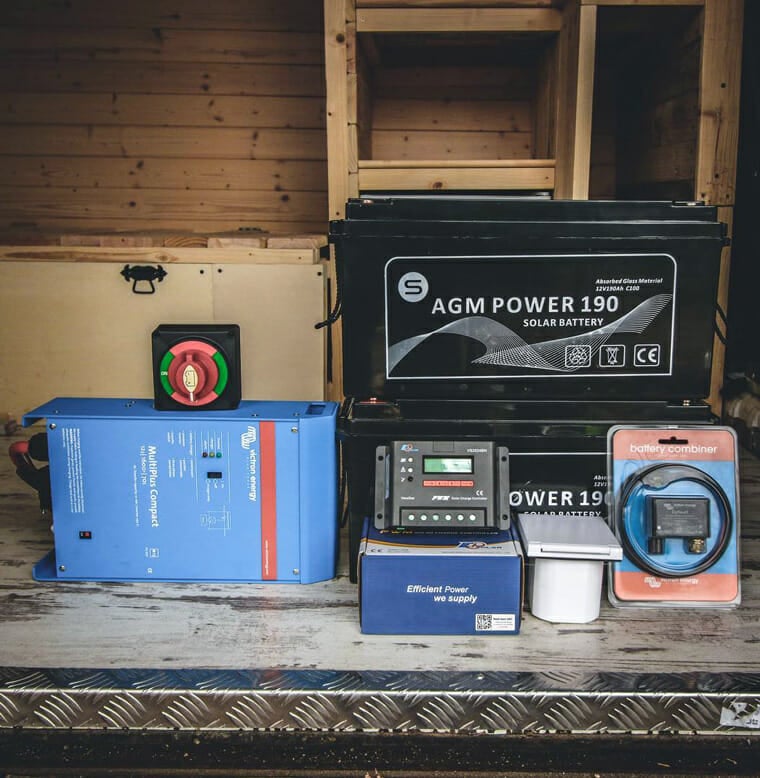
Battery Chemistry: Lead Acid vs Lithium
Not only do batteries come with different uses, there are also different chemistry makeups that affect function and battery performance. The two main vehicle battery designs that you will encounter are lead acid and lithium.
Starter batteries, deep-cycle batteries, and hybrid batteries can all be bought as either lead acid or lithium.
Lead Acid Batteries
Lead acid batteries have four internal parts: a positive plate, a negative plate, a separator and an electrode all contained within a case. They are heavy batteries because, surprise, these plates are made of lead!
Pro Tip: To stay healthy, a lead acid battery should not be regularly discharged below 50% of the total capacity. This is called the Depth of Discharge, or DOD. Discharging below this level will not hurt the battery in the short-term, but if the battery is consistently being drained or stored below 50% charge it will not last as long. The less you discharge your battery, the longer it will last. To make your battery last a really long time, keep it’s DOD at 20% or less.
There are several types of Lead Acid batteries that all use similar chemistry:
Flooded lead acid batteries (FLA): These are the most affordable battery type, but they also require the most maintenance. Flooded batteries use a standard liquid electrode which needs to stay topped off in order to operate properly. When purchased, these batteries are dry and come with removable caps so the casing can be filled with distilled water. The liquid level should be checked on a monthly basis and filled accordingly. Check out this website for details on how much to fill the battery and maintenance instructions.
Because flooded lead acid batteries are liquid they must be stored upright to prevent leaking their acidic electrode solution. They also have valves in place for off gassing. Flooded lead acid batteries release explosive and toxic gases as they charge so they need to be properly ventilated.
FLA batteries have a relatively long lifespan.
| FLA Pros | FLA Cons |
|---|---|
| Affordable | Monthly maintenance required |
| Long Lasting | Must be stored upright |
| Fast Charging | Needs ventilation |
| Works with most chargers |
Absorbed Glass Matt batteries (AGM): As the name implies these use a glass matt instead of liquid electrode to separate the plates. AGM batteries hold their charge very well and are less sensitive to overcharging. These batteries are do not require dedicated ventilation because they have sealed valves that hold the gas inside unless severely overcharged. They were developed for the military so are physically robust, and can handle a large range of temperatures.
AGM batteries are usually about twice the cost FLA batteries and generally don’t last as long. They are able to discharge and charge more quickly than FLA, making them more applicable in situations where quick discharge is needed in a deep-cycle application or taking input from a high amperage alternator.
Because of the design of AGM batteries, they do not need to be stored upright to continue to operate efficiently. In addition, these batteries require less maintenance. AGM batteries have many different nicknames and can be sold as dry cell batteries, non-spillable, or valve-regulated lead acid.
| AGM Pros | AGM Cons |
|---|---|
| No dedicated ventilation required | Shorter lifespan than FLA or Lithium |
| Holds charge well | More sensitive to overcharging |
| Robust (can operate at an angle) | Expensive compared to FLA |
| No monthly watering | |
| Usually higher discharge rate |
Gel batteries: These work similarly to AGM batteries. They don’t leak because they use a gel instead of liquid electrode. Gel batteries are generally more expensive and more finicky than the other two chemistries. The gel inside can dry out and crack. They do have some characteristics that make them good for long term backup batteries and applications exposed to more extreme temperatures. For the most part we don’t recommend them for vandwellers.
| GEL Pros | GEL Cons |
|---|---|
| No dedicated ventilation required | Gel can dry out and crack |
| Handles extreme temps better | More expensive than FLA and AGM |
| No monthly watering |
Lithium-ion Batteries
When it comes to lithium batteries, there are a number of different types. The Lithium-ion batteries which are the little ones powering your cell phone (Lithium-cobalt) are different from lithium-ion batteries commonly used for deep-cycle applications. The ones we are specifically referring to are Lithium-iron phosphate (LiFePO4 or LFP), although some people are running cool setups with the Lithium-Colbalt used Tesla car batteries.
LFP batteries break all the rules of lead acid. They are generally safe batteries, do not off-gas and are resistant to heat so you won’t see them blowing up like the type of lithium-ion battery powering the Samsung Galaxy Note 7.
| Lithium Pros | Lithium Cons |
|---|---|
| More power for a fraction of the weight | Expensive up-front |
| Can operate sideways or tilted | Newer tech leads to less options |
| Safe, no ventilation required | Charge controller needs to be programmed |
| Very low DOD (up to 95%) | Harder to find or replace |
| Faster charge than any other battery type | |
| Long lasting |
Lithium batteries are advantageous because they can be discharged and stored almost completely empty without long-term damage. This means that instead of a 50% DOD limit (remember, that means using 50% of the total Ah capacity), you can design around a 90% DOD. They can also be charged quicker than lead acid batteries. Because of the way LFP batteries can discharge quickly but also deeply, they do have a specific type such as starter or deep-cycle.
Lithium batteries are the most expensive but also the most efficient battery type. They are one of the longest-lasting batteries on the market in both shelf life and charge cycles. If you have the money up front, they are more economical long term. If you have a bit of electrical skill, you can build your own pack for much cheaper but we’re not going to cover that here.
Lithium batteries do have some downsides. They must charge differently than the lead acid types, so many charging components don’t work with them. They also cannot be charged below freezing, so some more temperature control is needed for those in cold climates.
Overview of Battery Types
| Battery | Price | Ventilation | DoD* | Lifetime** |
|---|---|---|---|---|
| Flooded Lead-Acid | $ | Yes | 50% | ~500 cycles (2-4 years) |
| Gel Lead-Acid | $$$ | Yes | 50% | ~1000 cycles (5 years) |
| AGM | $$ | No | 50% | ~800 cycles (4 years) |
| Lithium Phosphate | $$$$$ | No | 95% | ~2000 cycles (10 years) |
*DOD = Depth of Discharge. This is the healthy depth of discharge recommendation for each battery.
**numbers vary greatly, these are estimates based on multiple data sources
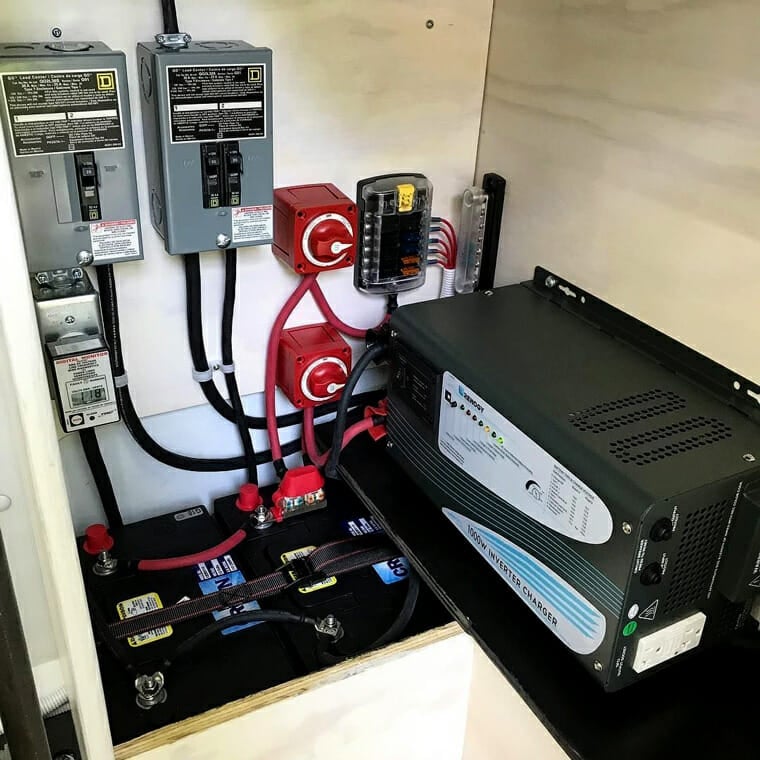
Combining multiple batteries together To Create An RV Battery Box
Sometimes it makes more sense to wire multiple batteries together rather than buying one big one. This is important to know when wiring an RV solar panel system.
Big batteries are heavy and harder to source. Wiring smaller ones together creates a larger bank that functions as one battery for your electronics.
It is essential to combine batteries of the same type and age. You should never wire batteries of different chemistry, size, or age together as they will be fighting each other trying to balance and discharge.
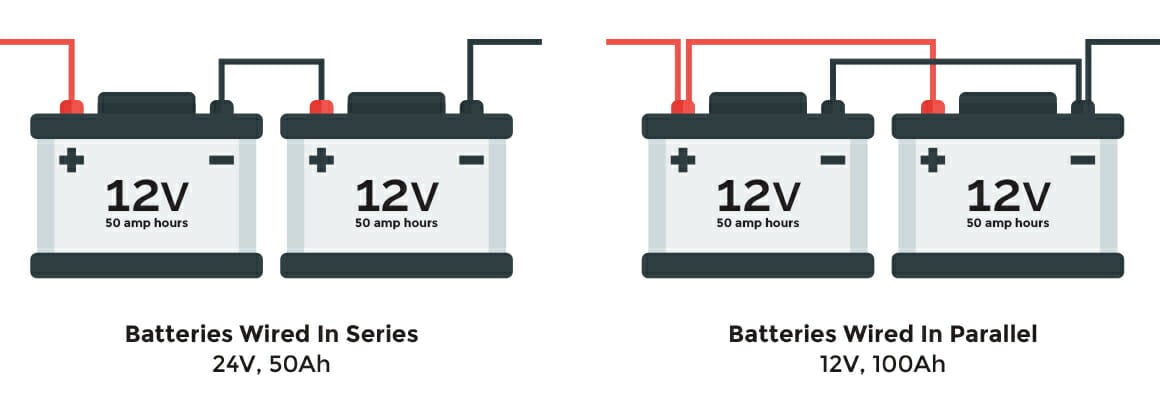
Wiring Batteries in Series: This is when two batteries are wired together with one positive (+) terminal connected to one negative (-) terminal. When wiring in “series” the battery voltage gets added together but your amp hours do not. If you wire two 6V, 50Ah batteries together in series, you get one 12V, 50Ah battery. You can wire as many batteries in series as you want as long as they’re they same type. Wired in series, the batteries discharge evenly and cannot get out of balance with each other, so it is the better option.
Wiring Batteries in Parallel: This is wiring two batteries together with one positive (+) connected to the positive (+) of another. When wiring in “parallel” the battery amp hours gets added together but your voltage stays the same. Two 12V, 50Ah batteries together in parallel makes get one 12V, 100Ah battery. Never wire more than two batteries in parallel together, and even this is frowned upon. Sometimes it is necessary due to battery availability. Check out this awesome write up from startgauge.co if you’re curious to know more.
Pro Tip: When wiring batteries together in parallel, make sure to use the same length cables so that resistance between batteries is equal.
Tip# 2: When sizing your interconnect wires, go one size up from what your fastest discharge rates will be. Unless you have an exceptionally large inverter, 2AWG is good for most parallel wires and 0AWG for most series interconnect cables for campervan setups.
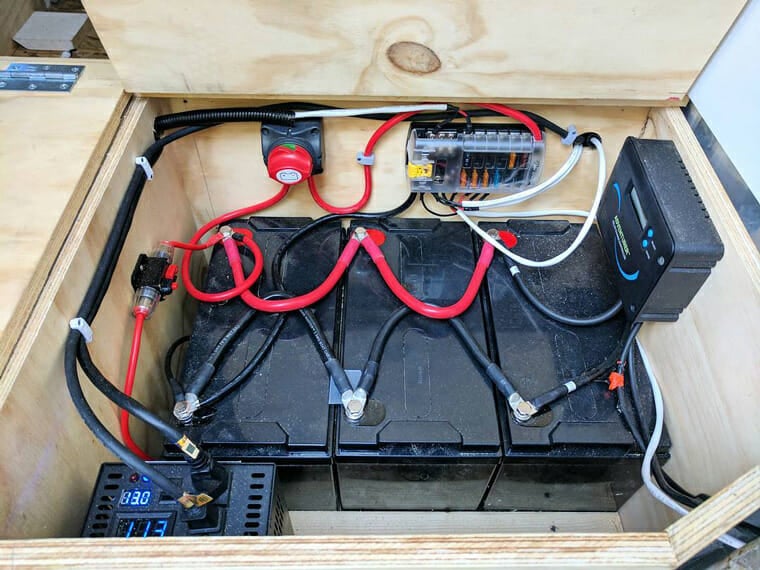
Battery Safety
Batteries should never be punctured or dropped. You should also never touch both (+) and (-) posts at the same time with a conductive material such as a metal wrench. They should not be in extreme temperatures or charged too quickly or with the wrong voltage.
If you have never worked with vehicle batteries before, it is wise to grab a mentor to look over your shoulder as you get more familiar with them. 12V DC systems are relatively safe compared to 110V AC household wiring, but there are still plenty of things that can go wrong.
Ventilation
It is necessary to ventilate FLA batteries within confined spaces. Batteries will off-gas while they are being charged. Be sure to keep this in mind when laying out your van build. The main design feature is to have a vent near the top of your battery compartment. This allows the lightweight hydrogen gas to float to the outside. Sulfuric-acid is the other main gas being released and is harmful to breathe. You don’t want the batteries to be off gassing under your bed as the sun is charging.
Some un-ventilated designs won’t ever have issues, and you may see some functioning designs without it, but it still should be done. You don’t want to be the lucky person who creates a spectacular battery fire!
Gel and AGM batteries are sealed and contain most of the gases inside so an external vent is not usually necessary; they just need atmospheric ventilation. This just means to not put them in a sealed container. We still would recommend not storing these batteries next to your head.
Additional Resources
If you have specific questions for your setup we highly recommend joining an electrical forum to get more advice. We’re fond of the experts at www.solarpaneltalk.com and find they’re quite active in engaging discussion.
Battery Charging
If you’re using lead-acid batteries you should aim to reach 100% charge at minimum twice a week to get the longest lifespan. Even better is hitting that 100% charge once a day. Lithium batteries are not significantly affected if you store them below 100% charge.
Pro Tip: Each battery chemistry need different charge settings. Instead of profiling each battery type, we recommend that you read the documentation for your specific battery. Most companies tell you what voltage settings to charge at, and most good charge controllers allow you to customize the settings or at least pick AGM, FLA, GEL or even Lithium charge options. Don’t try to learn all of them at first, and it doesn’t hurt to call or email the companies if you are unsure.
Lead Acid batteries need to be charged all the way up and then need to sit at full charge for the chemistry to balance out. Because of this
There are several stages to a full charge for lead-acid batteries:
- Bulk: when batteries are below a certain discharge level their internal resistance is low. This means they can take a large amount of amps. The charger pushes as many amps as it can up to a certain limit into the battery to do this.
- Absorb: As they get closer to full capacity, the voltage is set at a high level that keeps the battery charging without damaging it. The more full the battery gets, the slower the amps flow into it at this voltage.
- Float: When the batteries are done charging up, they need to be kept topped off as the chemistry balances out. Float voltage is usually about 13.8V for the lead-acid types.
- Equalize. Some smart chargers will give FLA batteries a 15 minute burst of 14.4 volts every day or two for preventing stratification.
Lithium cells are a bit different and don’t need multiple stages to charge. Their internal resistance doesn’t increase significantly as they charge and they don’t drain when idle, so only they need a simple bulk voltage to charge. A lead-acid charger can damage them.
- Read more about the stages and proper charging at batteryuniversity.com
- Read more about lithium charging at powerstream.com
Charge and Discharge Rates
One more glossary term when talking about charge rates. We will use the reference:
C = Battery Bank Capacity (Ah)
Example: If you have two 150Ah 12V batteries wired in parallel to make a 300Ah battery bank, then C = 300. Use whatever C is for your particular battery bank to interpret the table below.
Charge Properties For Battery Types*
| Battery Type | Charging Min (Amps) | Charging Max (Amps) | Discharge Max (Amps) |
|---|---|---|---|
| FLA | C/12 | C/8 | C/8 |
| AGM | C/12 | C/8 | C/4 |
| Lithium | C/2 | C/2 |
*this table is for estimation and comparison purposes. Batteries vary greatly so read the data sheet for your specific battery to know exact charge and discharge limits.
Without getting into too many specifics, batteries are healthiest when charging and discharging within limits. For instance, if you charge a lead acid battery too slowly, it will be subject to “sulflation” and lose capacity more quickly over time.
The table above gives you general estimates for the minimum and maximum charging Amps that you should plan for.
Example (continued): you have a 300Ah AGM battery bank. The slowest you should charge it is 300/12 = 25A. The fastest you should charge it is 300/8 = 37.5A. This means that a good charge speed for it is around 30A. You’ll note that this is about 360W of solar, which falls right in the range of solar needed for replenishing half of the 300Ah battery bank.
Discharge rates:
This is most relevant when choosing your inverter size. If you continuously discharge greater than the battery chemistry can handle, you’ll wear it out quickly and have to buy a new expensive battery sooner than you want.
Example (continued): Your 300Ah AGM battery can be consistently discharged up to 300/4 = 75A. To transfer that to inverter size, multiply by 12. 75A x 12V = 900W inverter.
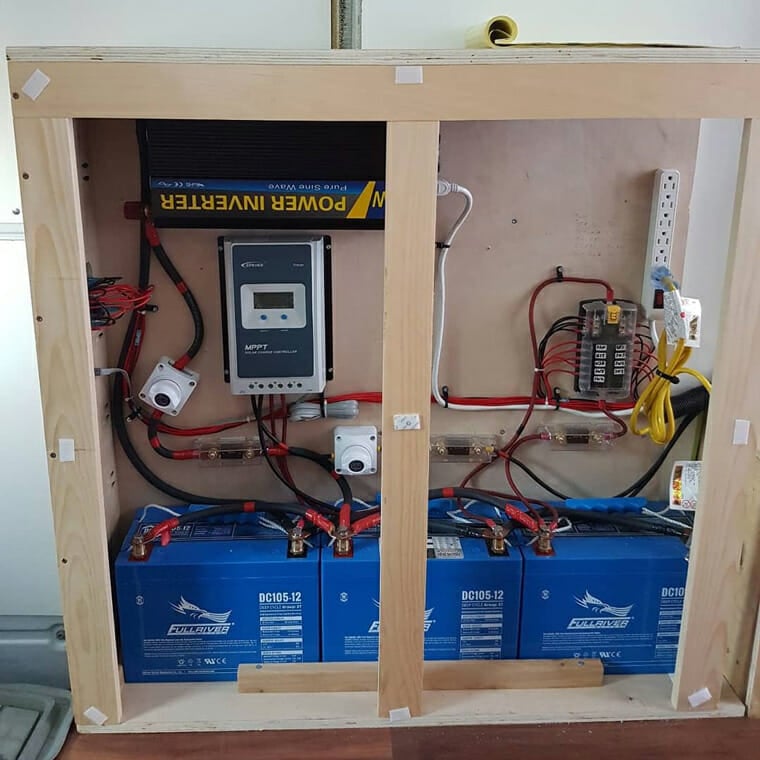
Measuring How Full Your Batteries Are
Below are some options for measuring the state of your system. There really isn’t an optimum way to accurately measure how much charge your batteries have, which is why it’s important to make a robust setup so you can be confident in letting it run.
Voltage: To get a rough estimate of this level you can read the battery voltage. This is affected by different characteristics such as how recently they have been used and environmental temperature. A fully charged 12V lead acid battery sits at about 12.7-12.8V. At 50% discharge, it’s around 12.1-12.2V. For a more detailed explanation on lead acid types, look at this post at www.energymatters.com. Voltage is most useful in making sure you don’t discharge your batteries all the way. Once you get below 12.1V, it’s time to try to cut your electrical usage.
Lithium batteries are even harder to read using voltage and require a BMS (Battery Management System) to maintain proper charge. But they are less sensitive to being stored at partial charge so the consequences are lower for not knowing.
- Bluetooth communication
- Easy to install and program
- Voltage, current, amp-hours consumed
- State of charge, power consumption (Watts)
Shunt Ammeter: This is a common device in most mid to upper level RV systems. Essentially it is a tiny resistor that measures how much current passes through it. The idea is that if you measure how much current is leaving your batteries, you have a fairly good idea of what their charge level is. There are varying degrees of discussion on the safety of these. In theory, your battery should be bonded (grounded) directly to the van chassis with no resistance. This means you have to either have an improperly bonded system or a shunt that isn’t measuring all the paths of electricity.
Shunt based monitors, such as the Victron Battery Monitor are quite popular. They give more numbers to make you feel in control. In reality, with lead-acid batteries it is hard to measure because their resistance changes depending on operation, temperature, age, etc. Battery meters will still be a bit more accurate than a straight voltage meter.
We’re of the opinion that most battery systems will chug along just fine without a battery meter. They are great at measuring instantaneous power use, but not very accurate for measuring battery charge over a period of several days.
Hall Effect Ammeter: This is a non invasive way to measure the amps coming through a DC circuit. You can buy a simple one that will give you a good idea of how many amps are passing through different circuits. This also measures instantaneous power usage without adding resistance to your negative cables.
Smart Chargers
When you are buying a charge controller for your solar panels or a smart charger to plug into an shore power, you need to make sure it has the ability to charge your specific battery type. Each battery will take a different amount of current at different stages of the process so it is important to keep your batteries safe as well as charge them efficiently.
To learn about solar charge controllers, head over to our post dedicated to them.
Final Thoughts
There is a lot of information just for some silly batteries! If you follow the general rules of thumb outlined then you won’t run into major issues.
Continue Reading:
- Battle born lithium battery review
- Solar panel calculator and DIY wiring diagrams
- Best solar panels for a camper van
- Installing a battery isolator
- How to install a B2B (battery to battery) charger

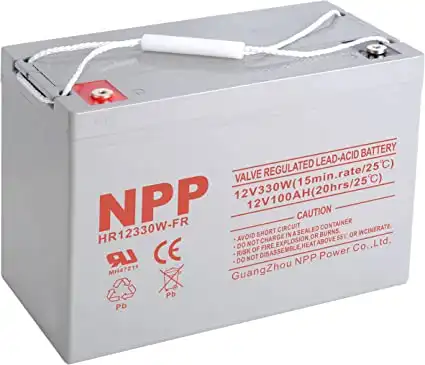
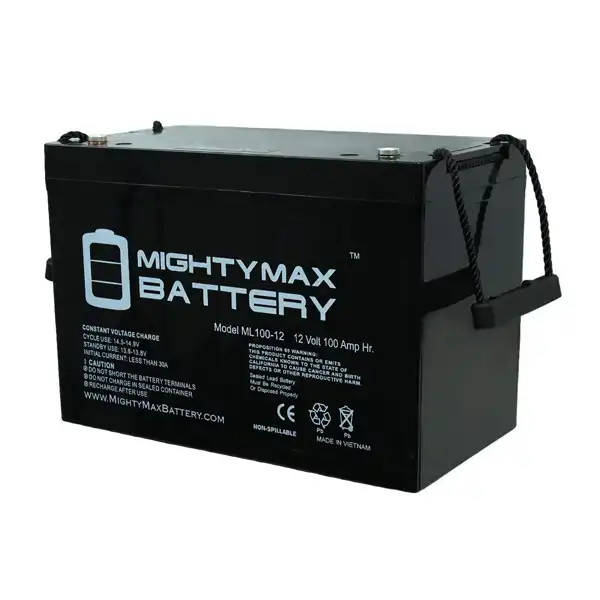
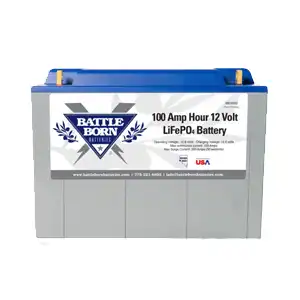
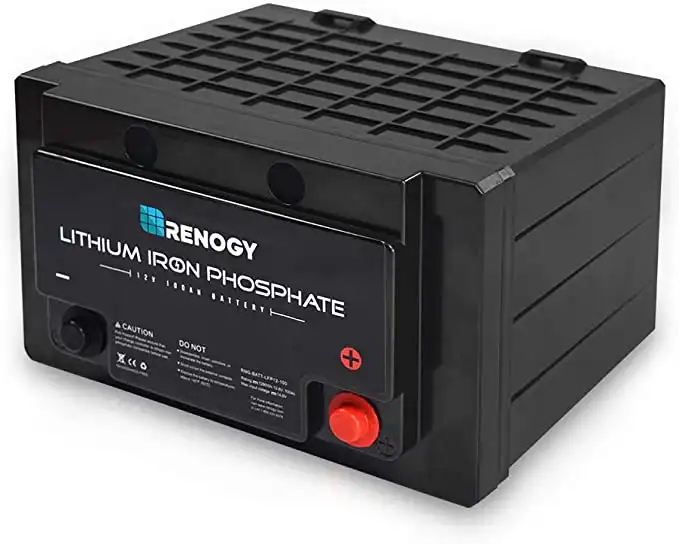
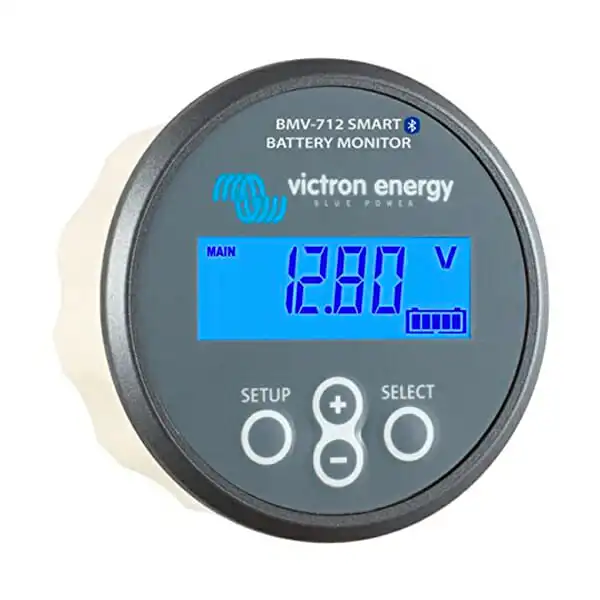
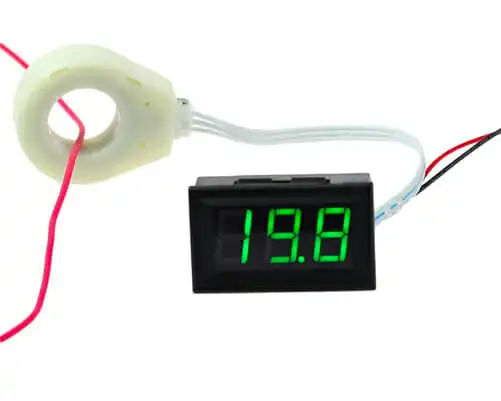
Thank you so much for sharing this information. Having no electrical experience, I’ve been intimidated and confused at coming up with an electrical system for my van. Your posts have described the components thoroughly and so clearly. Very nice work! I look forward to reading more.
I’m so glad to hear that 🙂 We’re hoping to add even more info in the near future, let us know if you have any unanswered questions!
interested in the LifePO4 12v100Ah battery for my new solar setup-am new to this and trying to get it together-have 2 100watt panels to start with
I noticed a few minor technical inaccuracies I can correct if you are interested.
I appreciate that you explained that it is advisable to never put them in a sealed container to keep them ventilated. I will keep that in mind since I will be buying one for my uncle. He asked me to buy him one for his birthday since his vehicle has been in the garage for months. It appears that he can’t buy one because of a financial crisis. This will help me store it while waiting for his birthday.
Millie: while storing, you really only need to keep the battery in a cool, dry place. It is really only venting out gasses when it is charging. I still wouldn’t sleep next to it, but storing for your uncle can be done really anywhere inside.
Hi, it seems there’s a contradiction on your page. In the summary chart you have Gel batteries as needing ventilation. But in the Pro-Con table under gel batteries you say they do not need ventilation. I see you later clarify what you were talking about. But this was confusing at first. So just to be clear, they do need some ventilation, but they generally do pretty good at keeping all the Hydrogen gas inside?
Brilliant Article, You are nicely describing “What is battery”.And you also share a basic about
Starter batteries
Deep-cycle batteries
Hybrid batteries (AKA Marine or Golf Cart batteries)
Jumper batteries
I also review RV deep cycle battery. Also, if you want, you can include my site in your resource page:
https://rvexpert.net
I found your article very informative. you state to never connect more than 2 batteries in parallel but the next picture in the article shows 3 batteries connected in parallel in a box; i’m somewhat perplexed by this. also have you heard of using a BLS on a 12V FLA battery bank to retard sulfanation of the lead plates?
i have heard from some were that if you run the solar in a series you have to do the same for the batteries, and or the same in parallel. don’t remember from where i read this, is this true?
Great overview! Can you please clarify one point: You say “AGM batteries are usually about twice the cost FLA batteries and generally don’t last as long.” But later on it seems your sources indicate the FLA will last 500 cycles while the AGM will last 1000 cycles. So did you mean the FLAs don’t last as long as the AGMs? Is there any government website that lists this sort of technical data on the various batteries out there?……..thanks!
hey I need help I don’t have a lot of money on budget just purchased a used 21ft RV I want to go to 2 12v batteries instead of one I was looking at decade batteries says 1000 amps can you recommend a decent inverted to replace my stock one and if this battery isn’t what I need could you recommend one
Hi James,
If you don’t have a lot of money on budget, try make a homemade Solar panel with household items.
In creating one, elements that are considered vital in the chosen household items include zinc or titanium oxide to create conductive path, glass for the base, aluminum acting as the reflective panel, and other ingredients such as carbon to increase absorptivity.
I am running 4 6 volt golf cart batteries (2 in series to get 12 volts and then each series wired parallel) and have a question about how and where to connect house cables and inverter. It seems if I connect all the cables on the same series I would be using that series only and just balance charging it with the other series. Does that make sense or am I just making this too difficult – does it matter at all?
Thanks for your useful information! But I want to know the ways to maintenance and how long do RV batteries last?
A good way of describing, and nice article to get facts on the topic
of my presentation subject matter, which I am going to deliver in college.
I am using this Renogy charger to charge a 6700 mah battery for a PI Zero W.
I have connected an accessory plug with USB port to charge my batteries and it is working well. The panel was putting out 56 amps through the solar cool glass on a hazy day. Perfect for keeping my battery at full charge. I went out this morning to see my battery was at 12.4 volts after sitting for days.
Auto parts stores often sell “Marine deep cycle” batteries, these are good for solar storage. There is always a better and more expensive battery out there. A Lithium-Iron battery would be great, but depending on your needs and budget it may simply be neither be necessary or affordable.
What are you running off the battery? How much sun do you get?
Thanks for the article! What brand of solar panels do you recommend?